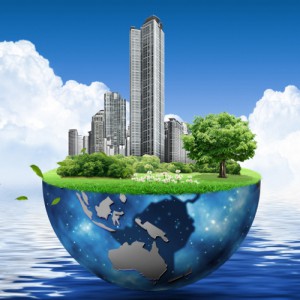SuDS, WSUD and Blue/Green Infrastructure – what’s the difference?
Alex Stephenson, Hydro International
Across the globe approaches to sustainable water management are getting more sophisticated as we recognise just how closely intertwined our lives are with the water cycle.
Historically, we separated out the way we think about water: waste water; drinking water; stormwater; rivers and coastal waters – we have compartmentalised, industrialised and managed each separately.
Now, climate change and more responsible environmental stewardship are driving us to realise that our approaches to water should be much more interconnected – and that integrated urban water management can have highly positive social consequences.
It’s an evolution that’s happening the world over, although countries are developing their legislative frameworks to water management in different ways, depending on the priorities of climate, water scarcity, flooding and population growth.
As the world becomes smaller, our ability to share and adopt best practice is rapidly accelerating. New water management approaches evolve in different places then ‘cross-fertilise’ by recognising similarities and sharing new ideas. You only have to look at the Australian winning garden at this year’s Chelsea Flower Show to see it in a nutshell: the refreshing message was for UK householders to disconnect their downpipes and build billabongs in their back yards!
So, when Paul Shaffer tweeted the question: what exactly are the differences between SuDS, WSUD and green/blue infrastructure – and what is just smoke and mirrors? – I stopped to think.
Terminology
My problem is that I strongly believe terminology can – and in some cases has – become the enemy of really good water management. Such terms are open to interpretation – or misinterpretation – and to being adopted for differing agendas.
Of course, we need to have terms to ‘hang our hats’ on. So I will attempt my own interpretation of each: I fully expect that some of you reading this may disagree!
Sustainable Drainage Systems (SuDS): A principle for surface water management only really used in the UK and Ireland, based on managing surface water as close as possible to where it falls by mimicking natural paths and processes. SuDS fulfil the joint objectives of quality, quantity and amenity using a wide toolbox of techniques (manufactured or ‘natural’) to deliver attenuation, infiltration, flow control and water treatment.
Water Sensitive Urban Design (WSUD) is a much more global term used to describe an approach to planning and designing towns and cities through integrated and sustainable approaches to water management. It looks at the water cycle as a whole and how urban environments can best be developed to bring about healthy ecosystems by integrating the whole water cycle.
I believe Green Infrastructure (GI) began life in the US alongside terms like Low Impact Development (LID). For me GI is simply a way of describing surface engineering techniques that favour ‘natural’ or ‘green’ features. It can also be expanded to describe a way of linking green ‘corridors’ or spaces through urban and rural environments to build a countrywide green network to connect ecosystems and encourage biodiversity.
Introducing the term Blue Infrastructure links the concept of water to GI. Essentially blue corridors, or a network of water bodies, are intimately connected with green corridors. The ‘blue’ environment can encompass natural watercourses, lakes and ponds as well as man-made water bodies and manufactured drainage features.
It’s easy to recognise the vision that connects these concepts and gets people passionate. Using the opportunities that water presents to ‘green’ more of our public spaces can help our urban environments to breathe again. Reconnecting the need to conserve water with a need to recycle rainwater is a ‘no brainer’; we simply must stop wastefully sending useable surface water to sewers.
But with all of this well-intentioned passion come challenges of practicality and step-by-step progress: At the beginning of this blog I said we needed to go ‘back to basics’ by reconnecting the water cycle. But that does not necessarily mean back to nature all by itself.
My concern is that a passion for ‘green’ has become the sub-text for some of these terms and a platform to evangelise ‘natural’ as the default solution. After all, mankind has spent hundreds of years improving on nature and all infrastructure is engineered in some way. Are we at risk of developing a kind of pre-industrial preference for ‘green’ that excludes well-proven technologies that can help deliver sustainable – and practical – answers to urban problems?
Our construction industry is bearing the brunt of a stagnant economy and for many developers and contractors futuristic concepts of water-sensitive cities are little more than pipe dreams, compared to a day-to-day battle to stay profitable.
No doubt, the debate about terminology will continue. You could say, at the end of the day, the language is not that important. What is important is that an idealistic interpretation of SuDS doesn’t discourage shovel-ready projects and slow down the introduction of more sustainable water management practices that are still a huge improvement on the status quo.
